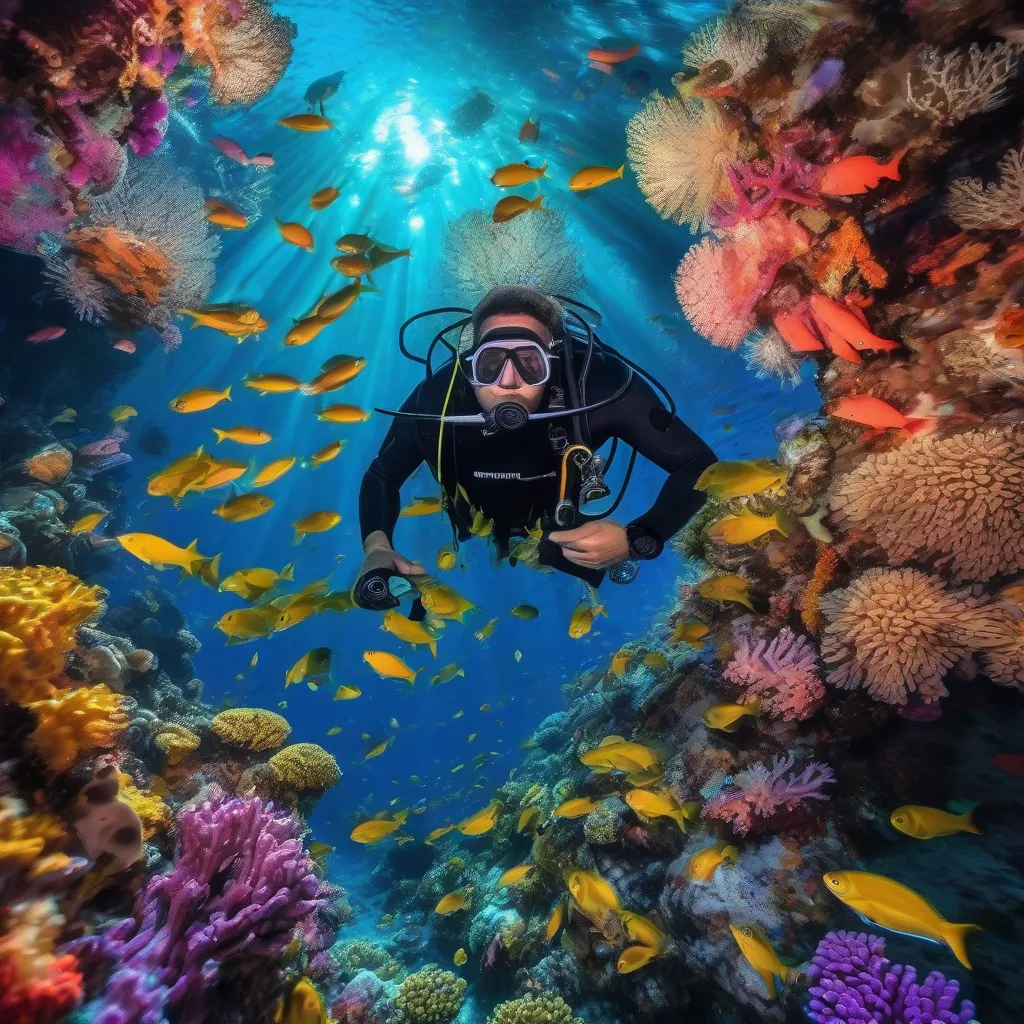Have you ever wondered, while snorkeling in the crystal-clear waters of the Bahamas, if you could still receive that important call? Or perhaps, while diving amongst the coral reefs of the Great Barrier Reef, you pondered how submarines communicate with the world above. The answer to these intriguing questions lies in understanding whether radio waves travel underwater.
The Science of Waves and Water
Before we dive into the depths of this topic, let’s first establish a basic understanding. Radio waves, like the ones that bring music to your car radio or connect your phone to the internet, are a type of electromagnetic radiation. This means they are made up of oscillating electric and magnetic fields that travel through space at the speed of light.
Water, on the other hand, is a dense medium with a high concentration of molecules. When electromagnetic waves, like radio waves, encounter this dense environment, a few things can happen:
Absorption:
Water molecules are excellent absorbers of electromagnetic energy. This is particularly true for radio waves, which lose energy rapidly as they try to penetrate water.
Scattering:
The suspended particles and salts in water can cause radio waves to scatter in different directions, further weakening the signal.
Reflection:
Depending on the angle and frequency of the radio waves, some of the signal might be reflected off the surface of the water.
These factors combined make long-range communication using traditional radio waves practically impossible underwater.
So, Can You Listen to Your Favorite Radio Station Underwater?
The short answer is, not really. While radio waves can technically travel underwater, they attenuate, or weaken, very rapidly. This means that even with a powerful transmitter, the signal would only travel a short distance before becoming too weak to be detected.
This is why submarines utilize different methods of communication when submerged.
How Do Submarines Communicate Underwater?
Submarines use a clever combination of sound waves and extremely low frequency (ELF) radio waves for communication:
1. Sonar (SOund Navigation And Ranging): This technology utilizes sound waves, which travel much further in water than radio waves, to detect objects and communicate underwater.
2. ELF Communication: For longer distances, submarines use extremely low frequency radio waves. These waves have very long wavelengths and can penetrate seawater to a greater depth. However, ELF communication is extremely slow and limited to one-way text-based messages.
Exploring the Underwater World: Travel Tips
So, while you might not be able to catch your favorite radio program while exploring the underwater wonders of the world, there are plenty of other ways to enhance your aquatic adventures.
Planning a diving trip to the Maldives?
- Research reputable diving operators: Look for operators like those recommended by travelcar.edu.vn who prioritize safety and sustainability.
- Consider the season: The best time to dive in the Maldives is during the dry season (November to April) for optimal visibility.
- Pack appropriately: Don’t forget your diving certification, reef-safe sunscreen, and a waterproof camera to capture the vibrant marine life.
FAQs about Radio Waves and Water
1. Can you use a cell phone underwater?
Regular cell phones rely on radio waves, which don’t travel well underwater. However, there are specialized waterproof cases and communication devices that use sound waves to enable limited underwater communication.
2. Do other types of electromagnetic radiation penetrate water better?
Yes, some wavelengths of light, particularly blue and green light, can penetrate water to a greater depth than radio waves. This is why underwater environments appear predominantly blue-green.
3. What are some exciting underwater destinations for travelers?
From the shipwreck-laden depths of the Bermuda Triangle to the vibrant coral reefs of the Philippines, travelcar.edu.vn offers a wealth of information and resources for planning your next underwater adventure.
Embracing the Silence
While radio waves might struggle to reach the depths of our oceans, exploring the underwater world offers a unique opportunity to disconnect from the constant digital noise and embrace the tranquility of the deep. So, gear up, dive in, and discover the hidden wonders that await beneath the surface.
For more travel tips and inspiration, be sure to explore the wealth of resources available at TRAVELCAR.edu.vn.
 Scuba Diver Exploring Coral Reef
Scuba Diver Exploring Coral Reef
 Submarine in Ocean Depths
Submarine in Ocean Depths

